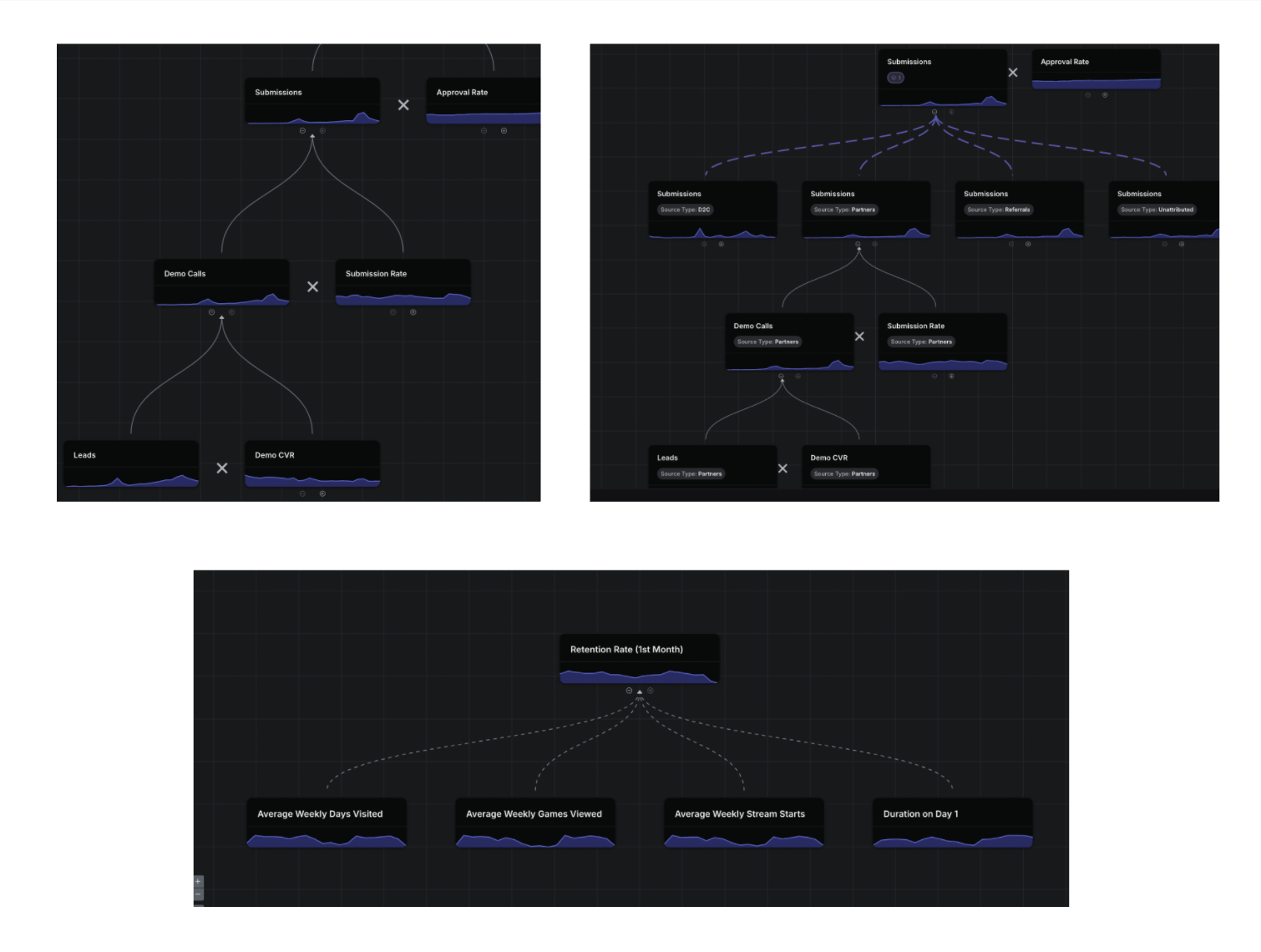As awareness of knowledge graphs grows, one of the standout architectural features of Trace is its use of a graph infrastructure to capture multiple types of relationships between metrics.
This powerful capability enables the product to embed diverse types of relationships within a single graph, which, in turn, facilitates the modeling of complex business processes—such as sales or marketing funnels, growth equations, and financial models—directly as metric trees.
Specifically, Trace allows for:
- Mathematical relationships between metrics, like in a sales funnel or financial model, to be explicitly modeled. For example, Demo Calls * Submission Rate = Submissions, where the relationship is mathematically and explicitly defined.
- Seamless expansion of metric nodes into their sub-segments, enabling the creation of new derived metric trees. For instance, Submissions can be broken down by marketing channels, with each Submissions node still representing the full funnel equation underneath.
- Implicit relationships, where certain metrics—such as engagement metrics—relate to other metrics, like retention, but the connection may not be mathematically or precisely defined.
When you examine these metric trees, you’ll see critical business knowledge embedded throughout—from how processes unfold (e.g., the sales funnel) to how various controllable sub-processes (e.g., leads from different channels) feed into larger outcomes (e.g., submissions).
Behind the scenes, Trace comprehends these relationships, making the creation and modification of metric trees seamless, and, most importantly, intuitive and useful.







